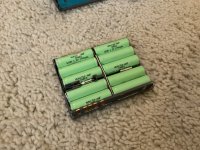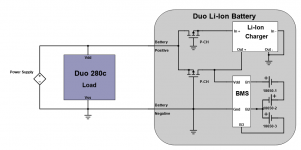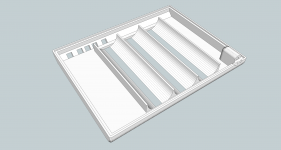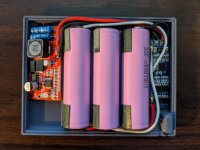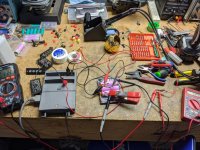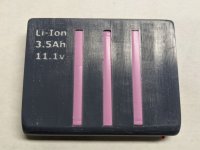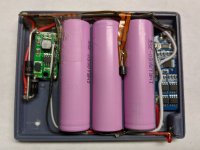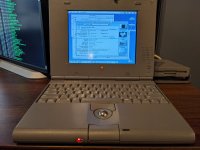sutekh
Well-known member
I see a few threads where this has been discussed, but not any that seem to have resulted in a fully-functional Li-ion pack. Now that my 280c is re-capped and functional, the next step is to make it portable! It's OE NiMh is long dead, so an upgrade is in order. I want the pack to charge and operate properly in-situ (no janky discharge only, remove to recharge arrangement), have as much capacity as possible within the limited space available, and be safe to operate.
Given those parameters, I first considered Lipo, which I have quite a bit of experience with professionally, but their lack of internal regulation and penchant for expansion make me nervous--even if they'd be the most volumetrically efficient. LiFePO would be my preferred option from a stability standpoint, but the cell voltages don't align very nicely with the original output of the 10-cell NiMH pack. Using that chemistry would require regulation in and out wasting energy / creating unnecessary heat, so it's off the island. That leaves the tried-and-true 18650--specifically 3 x Samsung 3,500mAh cells. That'll provide over 200% more capacity than the original battery, which should provide a very satisfactory runtime in conjunction with the installed SCSI2SD
Choosing cells is really the easy part though. Aligning the voltages and addressing Lithium batteries' specific sensitivities is the trick. If it weren't for the need to add some additional electronics for regulation and charging, I might have been able to stuff 6 cells into the available space, but c'est la vie... I'm measuring 20v coming from the +/- leads of the notebook when plugged in, which I'm sure drops to a suitable level for the NiMH under the load of charging, but an unregulated circuit certainly won't serve for a Lithium battery. Some form of variable input, regulated 3S Li-ion charger is needed. Also necessary is a BMS (battery management system) to keep the cells balanced and disable the input / output if any cell gets too low, too high, or the current demands exceed reasonable thresholds.
Here's what I have mocked up so far. The little PCB on the left is a 3S Li-ion charger that accepts an input voltage up to 24vdc. The 3S BMS is on the right.
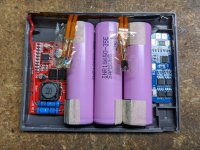
Another challenge will be steering current through the charger when charging, but bypassing it when discharging. I'm planning to address that with a pair of P-channel FETs vs. diodes (much lower forward voltage drop). I'll post updates with success / failures as it starts to come together...
Given those parameters, I first considered Lipo, which I have quite a bit of experience with professionally, but their lack of internal regulation and penchant for expansion make me nervous--even if they'd be the most volumetrically efficient. LiFePO would be my preferred option from a stability standpoint, but the cell voltages don't align very nicely with the original output of the 10-cell NiMH pack. Using that chemistry would require regulation in and out wasting energy / creating unnecessary heat, so it's off the island. That leaves the tried-and-true 18650--specifically 3 x Samsung 3,500mAh cells. That'll provide over 200% more capacity than the original battery, which should provide a very satisfactory runtime in conjunction with the installed SCSI2SD
Choosing cells is really the easy part though. Aligning the voltages and addressing Lithium batteries' specific sensitivities is the trick. If it weren't for the need to add some additional electronics for regulation and charging, I might have been able to stuff 6 cells into the available space, but c'est la vie... I'm measuring 20v coming from the +/- leads of the notebook when plugged in, which I'm sure drops to a suitable level for the NiMH under the load of charging, but an unregulated circuit certainly won't serve for a Lithium battery. Some form of variable input, regulated 3S Li-ion charger is needed. Also necessary is a BMS (battery management system) to keep the cells balanced and disable the input / output if any cell gets too low, too high, or the current demands exceed reasonable thresholds.
Here's what I have mocked up so far. The little PCB on the left is a 3S Li-ion charger that accepts an input voltage up to 24vdc. The 3S BMS is on the right.

Another challenge will be steering current through the charger when charging, but bypassing it when discharging. I'm planning to address that with a pair of P-channel FETs vs. diodes (much lower forward voltage drop). I'll post updates with success / failures as it starts to come together...

